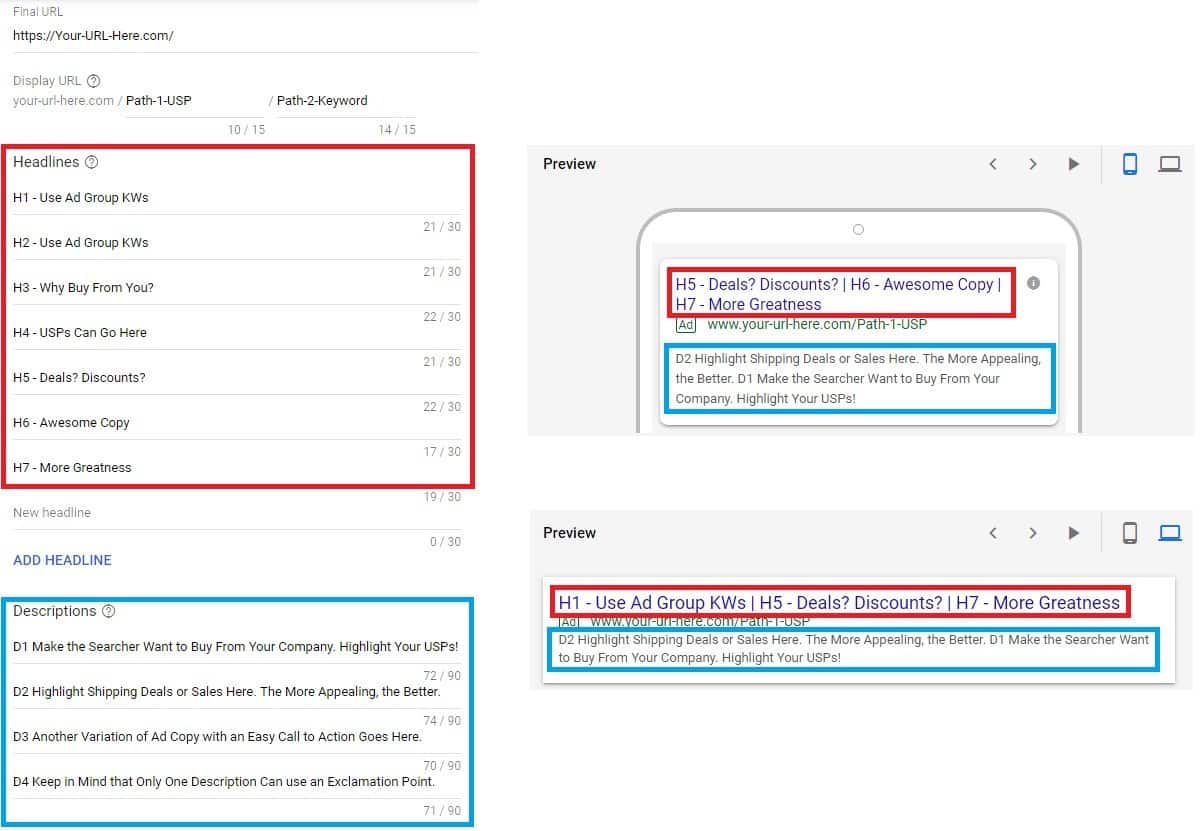Responsive search ads (RSAs) are great for testing different combinations of ad copy to see what works best. You provide the headlines and descriptions, and Google Ads automatically chooses which assets to show together based on your historical ad performance.
Although Google’s machine learning is in charge of which assets are shown, you have the option of choosing to pin which position your headlines and descriptions are shown in. However, for best results, only pin one headline and/or description (your main message) so that Google’s machine learning systems can test effectively.
- Headlines (30 characters): Up to 15 headlines can be included for each RSA. Best practices are to provide eight to 10 headlines, two of which should include very targeted ad group verbiage. Three additional headlines should be focused on your unique selling proposition (USP) or branding efforts rather than your keywords. The more headlines provided the more options Google will have to create responsive ads, which may increase ad performance.
- Descriptions (90 characters): RSAs can show up to two descriptions at a time, but you can provide a maximum of four. In order for Google’s system to work, at least two unique descriptions are required. These descriptions should be similar or identical to your expanded text ads (ETAs), and need to highlight information about your product or service that is not mentioned in your headlines. Including a call-to-action is always recommended as well.
- Paths (15 characters): Two path fields are shown with RSAs, so use these fields to highlight either the keywords in your ad groups or a USP you didn’t already mention in headlines or descriptions. RSA path fields should be used the same way as path fields in ETAs.




